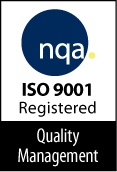In clinical trials maintaining the study blind is critical. A compromise in blinding can cost a study team subjects, drug kits or in the most extreme circumstances, the study itself. Careful consideration should be given when dealing with any information that could be potentially unblinding.Types of things in a trial that could be potentially unblinding are:• Randomization Schedules• Drug Schedules• Production Lot Numbers• Unblinded Drug Order Forms• Unblinded Data Transfers• Ad Hoc ReportsA well written communication plan is the key to maintaining the blind in a trial. A good communication plan will detail whether a team member is blinded or unblinded, as well as the protocol for the handling of unblinded information. For example, a provision to require all email attachments be password protected and providing separate blinded and unblinded passwords to the appropriate staff.Randomization and drug schedules should never be emailed as they have the potential to invalidate the entire trial or make the drug supply unusable. Normally these types of materials are sent via SFTP or provided on encrypted hard drives or DVDs.Production lot numbers for specific kit types should be maintained by unblinded supply chain team members. These items should never be used in place of a blinded lot number. The blinded lot number should normally be used to ensure that unblinding treatment types by lot number are not a possibility.Unblinded Drug Order forms should only be handled by unblinded personal. The most common mistake regarding Unblinded Drug Order forms is when a drug depot forwards one to the IRT vendor or helpdesk due to an address error. In most instances, the unblinded DOF is then forwarded to a blinded team member in error with the intent of getting an address correction. Simple password protection of the .PDF file for the DOF can prevent this situation from playing out.Unblinded data transfers face similar pitfalls as unblinded drug order forms. Unintended unblinding can occur when a transfer file is inadvertently forwarded to a blinded team member. This type of scenario can be mitigated by requiring password protection of the location where the data transfer files are stored as well as requiring a password protection for any attachments sent via email.Ad Hoc reports also present an especially risky situation in regards to maintain study blinding. Ad Hoc reports are normally requested when information in standard reports is not detailed enough for the study team to use in a particular instance. Ad Hoc reports are risky because of the lack of specifications on them and manual nature of their creation. The client should always assume some risk when requesting an Ad Hoc report and the use of such reports should be kept to a bare minimum. Having the recipient of an ad hoc report complete a form detailing the information they are looking for and having an unblinded bio statistician review the request are a couple of ways to mitigate the risk associated with Ad Hoc reporting.The most important thing to remember when maintaining the blind is to take the appropriate time to review if the information you are handling is of a blinded or unblinded nature. In addition, be sure of the blinded / unblinded status of the study team as well. Once information is unblinded, there is no going back but by following a few simple best practices this worse case scenario can be avoided.

